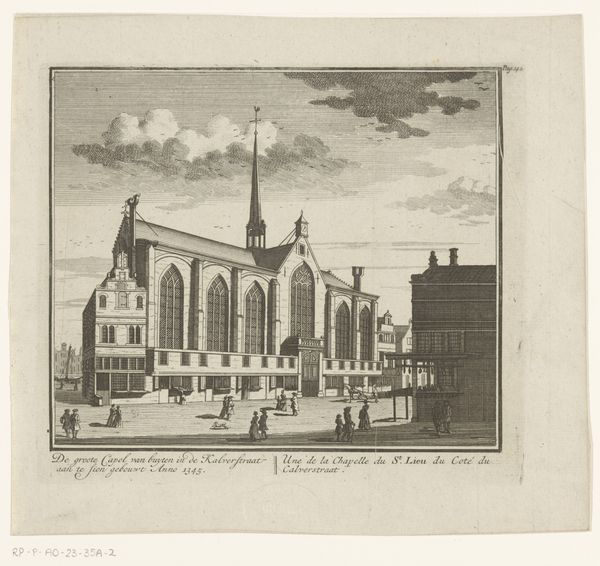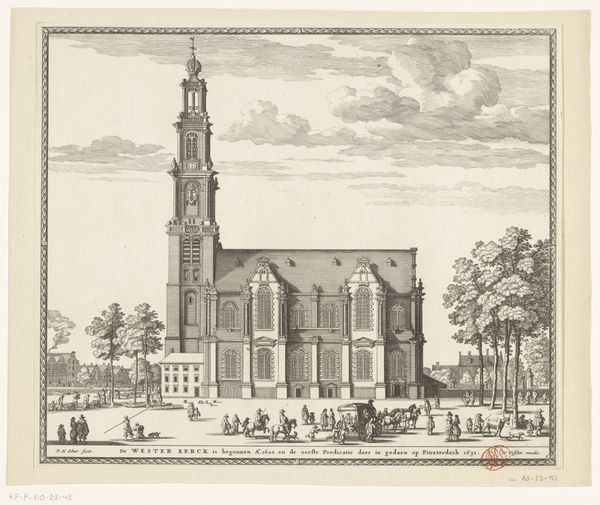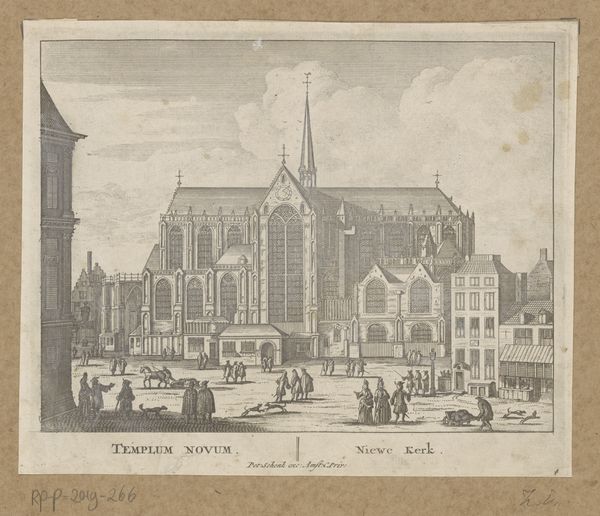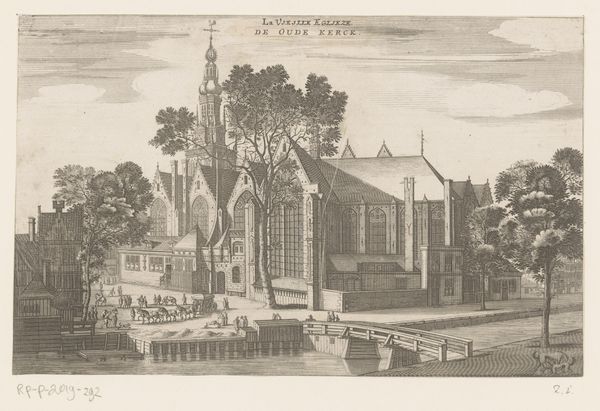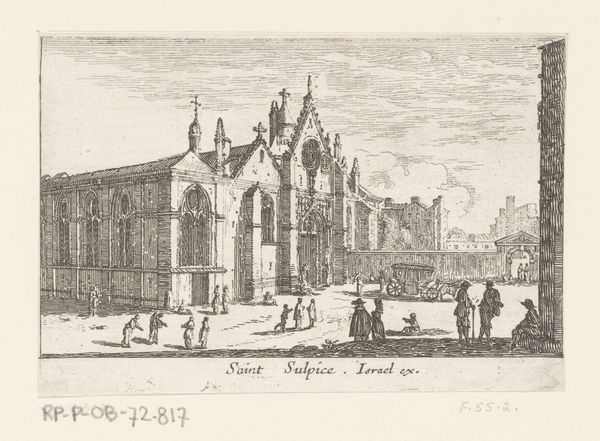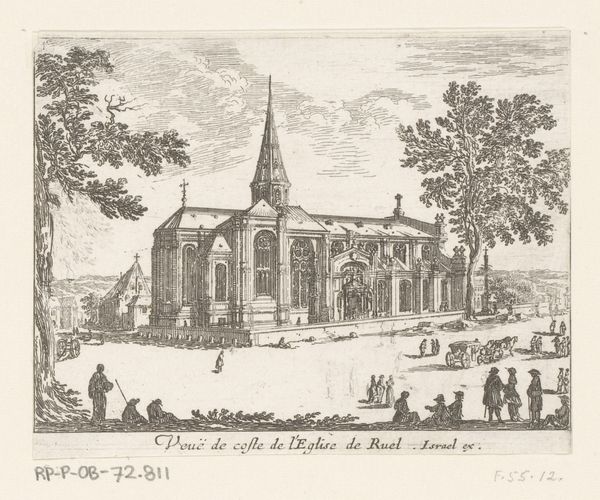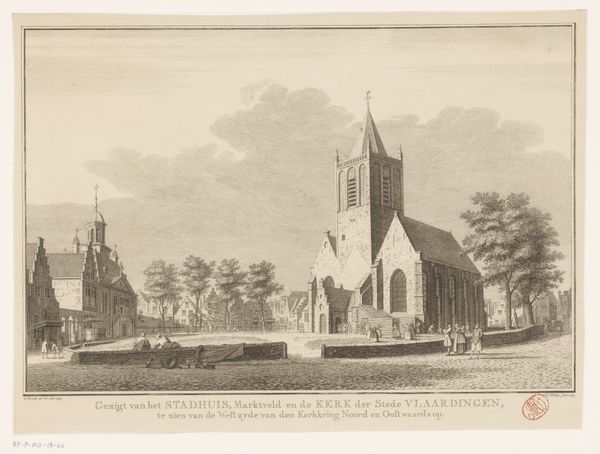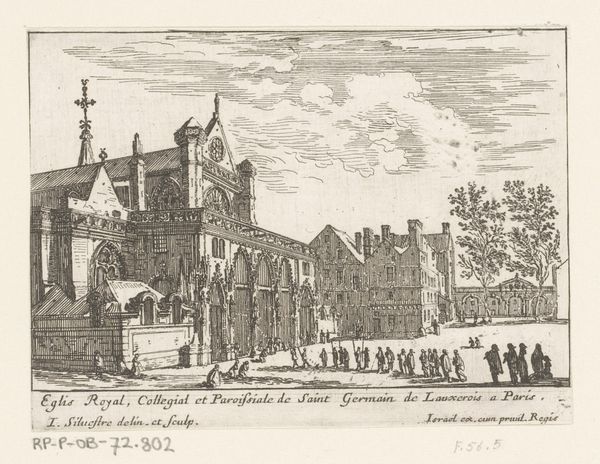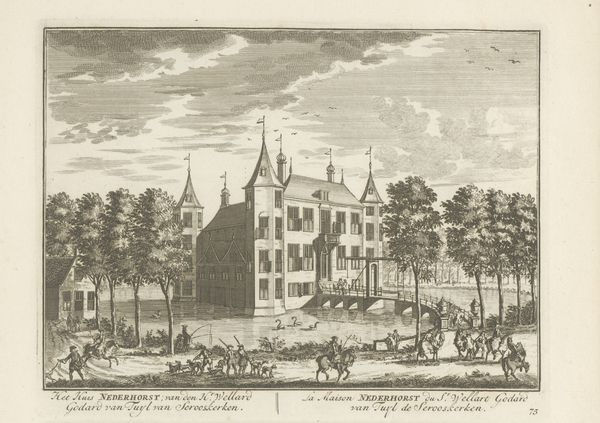
print, engraving, architecture
#
dutch-golden-age
# print
#
figuration
#
line
#
cityscape
#
engraving
#
architecture
Dimensions: height 192 mm, width 298 mm
Copyright: Rijks Museum: Open Domain
Editor: So here we have "Gezicht op de Engelse Kerk te Amsterdam," or "View of the English Church in Amsterdam," an engraving by Jacob van Meurs from around 1663-1664. What strikes me is the sheer detail achieved with the engraving process; you can see all the little figures and textures. How do you interpret this work? Curator: I'm drawn to how this print illustrates the labor involved in image production and consumption during the Dutch Golden Age. Consider the process: a craftsman, using specific tools and techniques, painstakingly transferred an image onto a copper plate, from which multiples could be printed. This accessibility democratized the "view," bringing architectural marvels like the English Church to a broader audience. Editor: That's a really interesting way to look at it. It shifts the focus from just the image itself to the method of its creation and dissemination. Curator: Exactly! Think about the materials: the paper, the ink, the copper. Where did they come from? Who produced them? The print isn’t just a depiction of the church; it's a commodity, circulating within a specific economic and social network. And the church itself – an English church in Amsterdam – speaks volumes about the city's role as a hub of international trade and religious tolerance. Editor: So, it's less about the artistic vision of van Meurs and more about understanding the historical and economic context? Curator: It’s about understanding *both*. Van Meurs was undoubtedly skilled, but his work, like all art, was deeply embedded in material realities and networks of production and consumption. How does understanding the context change your view? Editor: It gives it more weight, almost like the image is part of the broader flow of goods and ideas at that time. I won't just see a pretty picture anymore. Curator: Precisely. It’s a reminder that art is never created in a vacuum, and understanding its material conditions can enrich our understanding immensely.
Comments
No comments
Be the first to comment and join the conversation on the ultimate creative platform.

